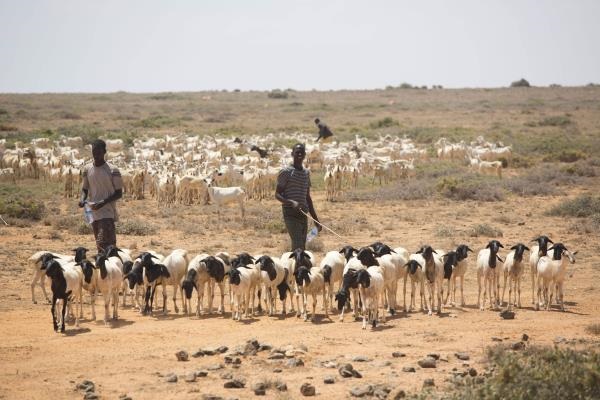
9 June 2017, New York - In a meeting with the United Nations Security Council President, Ambassador Sacha Sergio Llorentty Solíz of Bolivia, FAO Director-General Graziano da Silva has introduced an updated version of a joint FAO and World Food Programme (WFP) report on the monitoring of food insecurity in conflict-affected crisis.
Ambassador Llorentty Solíz described the report as "an invaluable tool" which will keep the UN Security Council updated on the food security situation of countries in conflict. "The information is very reliable and we look forward to receiving future editions," he added.
During Thursday's meeting, Graziano da Silva stressed that countries with ongoing conflicts have a disproportionately high number of food insecure people.
He noted that improving food security can help build sustainable peace and even ward off looming conflict. Actions to promote food security can help prevent a crisis, mitigate its impacts and promote post-crisis recovery and healing, the FAO Director-General added.
An estimated 108 million people across 48 countries are experiencing unacceptably high levels of acute food insecurity. This figure is 35 percent higher than in last year's report when 80 million people were in the same situation.
Major food crises are the result of conflict, record-high food prices at local level and abnormal weather patterns caused by El Niño, according to FAO and the World Food Programme (WFP) report Monitoring food security in countries with conflict situations submitted to the United Nations Security Council.
"Civil conflict is the driving factor in 10 of the 13 worst crises, underscoring the strong linkage between peace and food security," Graziano da Silva and WFP Executive Director David Beasley wrote in a foreword to the report. They noted how conflicts have left large numbers of people food insecure and in need of urgent assistance.
"The demand for humanitarian life- and livelihood-saving activities as well as resilience assistance is therefore escalating," they added.
The report underscores how some of the areas most affected by hunger crises are also in the grips of conflict and violence. In particular, South Sudan - where famine has been declared - northeastern Nigeria, Somalia and Yemen which are threatened by famine.
The report also noted how the spillover effects from conflict have had a significant impact on neighbouring countries, such as the impact of the Syrian refugee crisis in Lebanon and that of the Lake Chad Basin affecting parts of Cameroon, Chad, Niger and Nigeria.
"Investing in agriculture and rural development while providing life-saving food assistance is key to limiting the negative impact and addressing the root causes of conflicts," Graziano da Silva and Beasley, wrote, noting how in most of the countries covered by the report, eight out of ten people affected live in rural areas.
Pointing to the need for adequate investments in crisis prevention and recovery, the FAO and WFP leaders called for a robust understanding of the situation and for joint efforts to respond to the crises.
In the context of the 2030 Agenda for Sustainable Development, the report noted that given conflicts can inhibit sustainable development, Sustainable Development Goal 16 aims to significantly reduce all forms of violence and to find lasting solutions to conflict and insecurity. Similarly, eradicating extreme poverty and hunger, achieving food security and making agriculture sustainable are recognized as critical elements for meeting the goal of ensuring peaceful and inclusive societies.